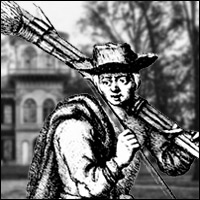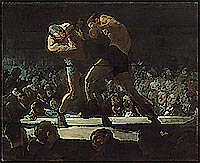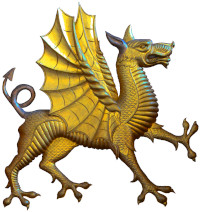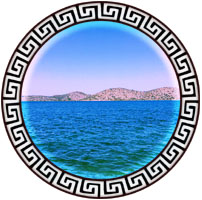[James’ comments are in brackets.]
I'd like to share with you and your readers some things that I have been testing over the last three years in terms of physical fitness for those interested in Striking and Grappling for sport or survival: running.
You have written about the importance of running in the Greek Warrior Tradition, as illustrated by Achilles' ability to run 25 miles and then fight like hell upon arrival.
[All-Power-Fighting, Volume 3 of The Broken Dance]
You are not the only one to have researched this; in fact, there has been another upon a similar track as yourself. His name is Christopher McDougal, and his work is as interesting as it is applicable.
Some of your readers may remember that Christopher McDougal wrote a book called "Born to Run" (
in which he ran a 50 mile race across the rugged mountainous terrain of Mexico with a tribe of Tarahumara Indians—who run the race in flip flops or barefoot.
A man I coached for, who remains my doctor, s an instructional level expert in 6 martial arts and who has fought in the cage and in stick fights, has been a track and field coach for 25 years. He has run over 50 triatholons. He told me recently that he has no respect for football players at any level—and he works as a team doctor for a high school team and treats NFL players for injuries, because “none of them, not one, can complete a track and field warmup without quitting. They are all pussies.”
[You see, we I the modern west think of being tough as purely external, as a projection of force or will or bluster upon another. The ancients, and primitives of all races and cultures, know that toughness is internal. Almost every race, at its root, has running, throwing and wrestling in its masculine culture. All sports, even gay endeavors like golf have aiming and chasing as key elements. The only thing unique about Western martial culture is boxing and comes exclusively from the Аrуаn diaspora 4,000 years ago.]
[See The First Boxers, Volume 1 of The Broken Dance.]
He also wrote a book called "Natural Born Heroes" (
syncing up the training of Ancient Greek Warriors with the training of WWII British Commandos operating in Greece. Oddyseus, Sykes, and Fairburn all make an appearance!
Reading "Natural Born Heroes" made me break out the training manual written by Christopher McDougal's running trainer, Eric Orton. The book is called "The Cool Impossible" (
and aside from somewhat hokey "you are there" bits, is a book that's worth its weight in gold!
The way that the Tarahumara Indians, the Ancient Greek Warriors, and the WWII British Commandos trained is all in this book right here. If that's not an endorsement, I don't know what is!
But here's the funny thing.
I know this book works and this is why...over the course of 2 years, I did all of the strengthening exercises on one leg only. The other leg I didn't! And guess what? The difference was literally night and day, as I found out working a job in which I walk six miles a day.
[This is a dangerous experiment in bilateral mechanics. Long term, such an imbalance will cause chronic use injuries. Bravo for taking one for the team here.]
The trained leg was so strong, but the untrained leg...well I wanted to take a reciprocating saw to hack that leg's foot off it was so painful!
Now this is not something I recommend doing (unbalanced training or hacking your foot off). When I did it, I was pretty foolish, and untutored in the ways of the body's adaptive response to exercise. I had one leg weaker than the other, and was afraid it would never get better. So I just focused on that leg. It later caused me problems down the road, but what do you know? Apply the same principles to the untrained leg and you'll get the same response, evening them out!
My loss can be you and your readers' gain though, if you bypass the two-year one-leg at a time experiment and jump in training both legs equally. So how exactly do you do it?
The training program is built around the use of a slant board. Essentially, you get up on the slant board, plantar-flexing your foot (aka bringing the heel up off the ground and balancing on your toes). You want to be driving primarily through your big toe, concentrating all your thoughts on bearing your weight through that big toe and keeping your leg straight and your torso upright.
You do all this while balancing with two ski poles. I bought two 3/8 inch diameter 4 foot long pieces of rebar, wrapped duct tape around each to prevent rust from staining everything, and use those for balance in lieu of the ski poles.
You do these things in 2 ways.
The first way is by holding this position for time isometrically (I recommend 3 minutes and 10 seconds for maximal results, the 10 seconds giving you time to get up on the slant board after setting your timer).
The second way is by holding this position isometrically while exercising the other leg with side kicks, frog kicks (side kicks with a bent knee), and knee raises dynamically for reps.
You can do both of these ways in different positions on the slant board mimicking different uphill, down hill, and flat terrain running conditions. Once you can do all these with ease, eliminating one or both of the ski poles/rebar for balance, you move on to a "wobble board", a circular disk with a semi-circle ball at the end, further challenging your stability.
[My therapist called this a BAPPs Board and used it to rehab my ankle injuries. I highly recommend having one of these around and using it for prevention rather than just after-injury repair.]
The biggest rule that makes all of this work is that you've got to do all these things barefoot and sockless.
I bought Eric Orton's "official" slant board and wobble board. For those interested, they are sold here (
. They are nice as they have some tread to grip onto with bare feet. They are a little on the pricey side, but they have worked for me. Your more industrious and mechanically minded readers may have taken a look at the pictures of them and make their own!
Take it from somebody on their feet all day: this stuff works. I've done it myself. Broken, fixed, broken, and refixed myself with it! It's the way the Tarahumara Indians, the Ancient Greek Warriors, and the WWII British Commandos trained to be as "fleet-footed as Achilles."
[The ancient Hellenes had coaches who took them through an exercise in bare feet called the tip-toe-circle. On could do this work on the beach or in a sand box with no equipment. However, take Richards advice and start out using ski-polls or some other preventative injury assistance, like holding onto a railing or monkey bars at the playground.]
It's not just a literary phrase.
It's a whole system of training!
Just like the Great Western Warriors of Old!
Sincerely,
Richard Barrett
P.S. I am not being paid to write this. I just believe in it!
[Richard, the readership can well imagine that I am not paying you! I enjoy our dialogues very much. Thanks for the training information. ]











